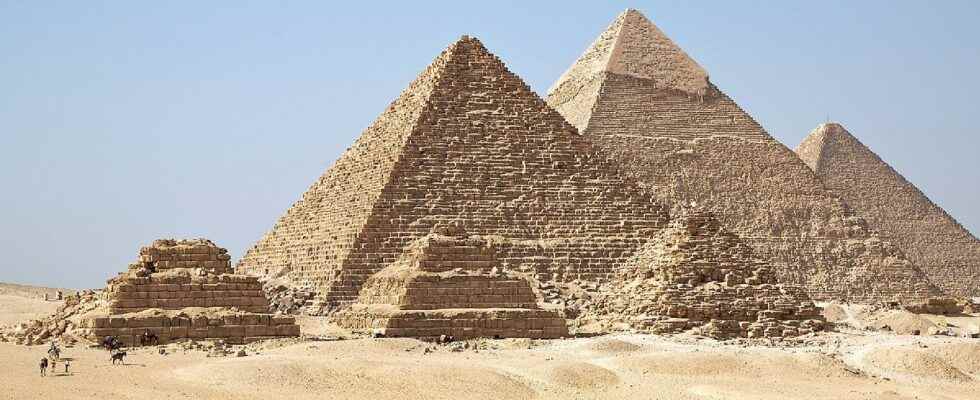Massive and complex, the pyramids of Giza never cease to fascinate us. But, the construction methods used during ancient Egypt are still not fully understood. A new study makes an intriguing proposition.
The pyramids of Giza continue to fascinate us, still 4,500 years after their construction. They are known to have been built to help the dead rise, especially Pharaoh. On the other hand, the method of construction remains relatively vague. Don’t imagine that one or two scaffoldings were enough – the magnitude of the task was colossal as the materials had to be heavy, if only to transport.
The mystery of the pyramids has also generated some hazy theories, such as their creation by extraterrestrials. While this type of ramblings circulates abundantly on the web, archaeologists continue to seek real scientific answers, by studying places.
And precisely, new works published on August 29, 2022 present a theory built on the basis of paleoecological analyzes – that is to say by studying the environmental configuration of the places during ancient Egypt, at the time of construction.
The arm of the Nile could facilitate transport
For the four paleontologists at the origin of this research, it is necessary to take into account the environment of the region. They thus studied fossilized seeds – these notoriously help to reconstruct the ecological landscape of a past era – in order to retrace 8,000 years of evolution of the Nile.
It turns out that around Giza, the authors found a high abundance of seeds in the studied era. And, these are in all respects comparable to the grasses which currently border the Nile. This demonstrates the presence of a permanent watercourse in this past. The level seemed particularly high during the reigns of Cheops, Chephren and Mykerinos – during the construction of the pyramids of Giza, therefore.
These paleoecological findings, together with other clues, show ” that the ancient river landscapes and the high level of the rivers around 4,500 years ago facilitated the construction of the Giza pyramids complex “. The high river levels of the time would have notably ” facilitated the transport of construction materials to the Giza pyramid complex “, write the authors.
This study is complementary to other works suggesting that the Egyptians probably mobilized rivers (or even created them). So: did a now missing arm of the Nile contribute to the construction of the Giza pyramids? This is a theory, certainly interesting, but beware, it is clearly not a definitive inventory, as the reconstruction of the time remains fragile.

